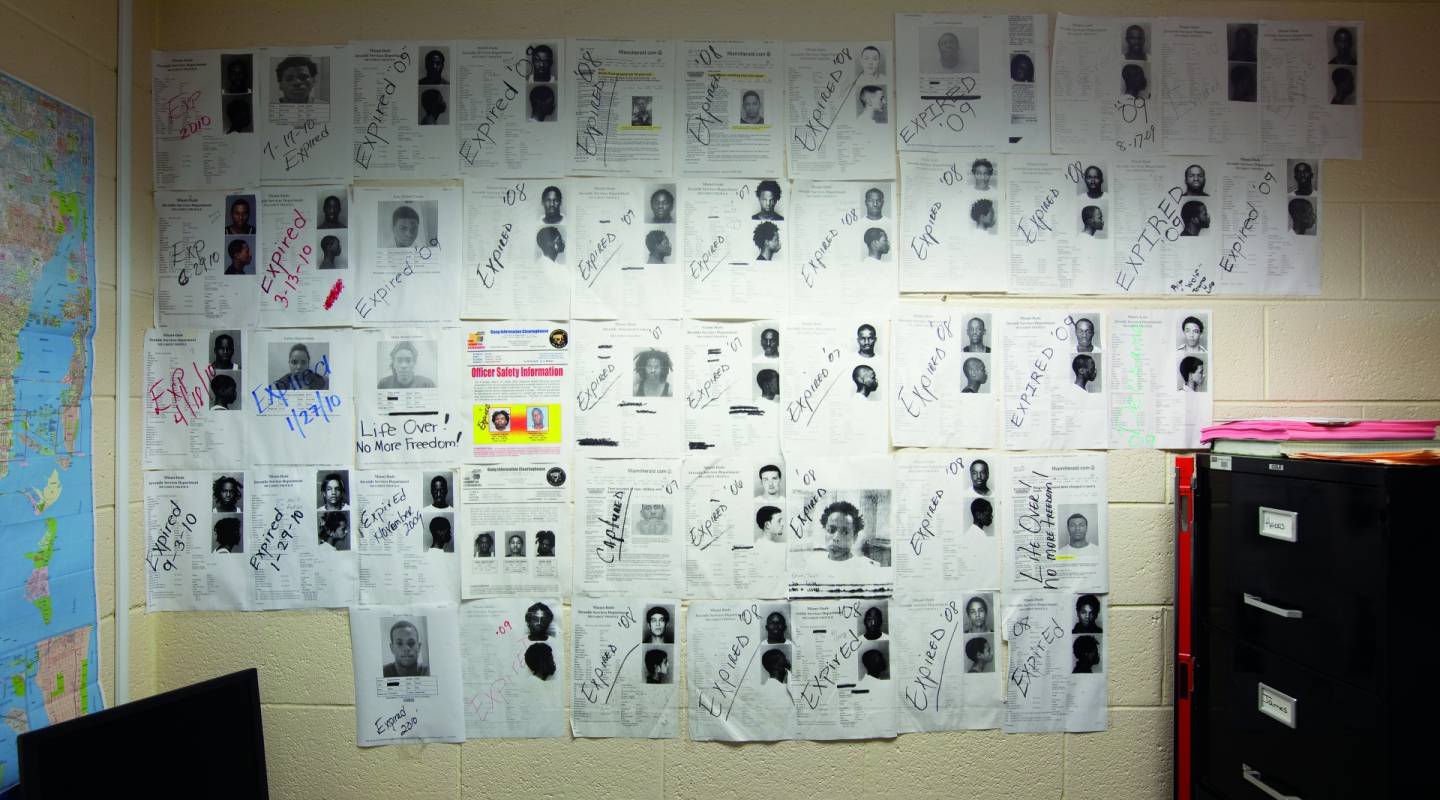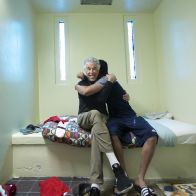This is at the Miami Dade juvenile detention centre.
It is located eight minutes from Liberty City, which is the country’s first public housing project, formerly called “negro town”, founded in 1934. It is still in use. These kids are held in juvenile detention for fights at school, loitering, possession, burglaries, etc. Some use the money to feed themselves and buy clothes for their family. Some are held in isolation where it is 62°F (17° Celsius) in August. They have no mattresses, no blankets, no pillows, just bugs, walls, solitude, and cold.
Some of the kids are here for felonies and others are here just for pissing off an adult. The fortunate ones are released with ankle monitors and escorted out. All of them are from groups that are struggling financially and emotionally. They are multiracial, multi-ethnic, Black, Cuban, Haitian, or Dominican. They come from the poorest neighbourhoods. The only opportunities these kids recognize are on the streets. There are a few options offered by community schools. Families, notably parents, are crippled by diabetes or dead from heart attack, stroke, or cancer. There are no schools, no healthcare and no economy.
This is the real Miami.
When they put ankle monitors on the kids, they tell them “if you don’t change your ways, you’re gonna join this graduation wall”. Expired means dead. Within two years after leaving the juvenile detention centre, any of these kids who was released with an ankle monitor has been killed, often from a gunshot wound. You let these teenagers out of an institution and 50 of them are dead within two years. And nobody is getting too tripped up on it.
Ten years after that photograph had been published, I went back to the image. I enlarged it, and enlarged it, and enlarged it more. There is so much data on the image: date of birth, address, place of arrest, arresting officer, arrest number, etc. I went to the public defender at Miami Dade. I told them I wanted to revisit all these addresses. I wanted to see the arrest reports of these kids.
He gave me the original arrest reports. I spoke to the officers. I spoke to the families. Then, I just went to Miami. If I did not get a response, I would stand in the middle of the street at the address where the kid lived 10 years ago. The kid was dead, but maybe the family lived there. I set up my camera on a tripod and stood there, an old white guy in the middle of the street in Little Haiti of Miami and some of the other worst neighbourhoods. I would wait until somebody would come out and say, “What are you doing?”. Then I would explain to them and show them the images. They would say, “Oh yeah I knew that kid, actually he was killed on this spot”. And I would just go through history.
I would go back and forth across the country, from Santa Barbara to Miami, to record these people and photograph them. I would just walk around the neighbourhoods to try and find out what has changed, if anything.
Lately, they put in a new housing project, which Liberty City was part of. There is no school included in the housing project, but they did include a probation office. So, what is this project about? Recreating an annex of a prison system on the outside?
I just try and ask questions to these people. Is this the best we can do?


